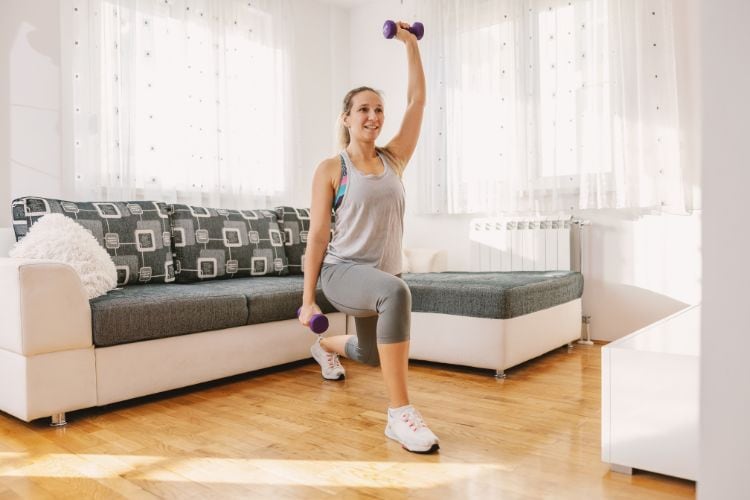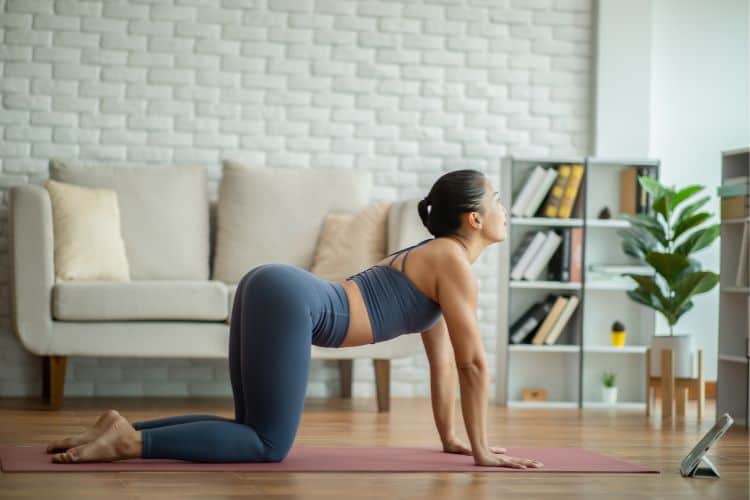Sign up for workout ideas, training advice, reviews of the latest gear and more.






When the winter chill arrives, motivation can drop fast. Shorter days, colder temperatures, and the desire to curl up indoors can make it tempting to abandon your fitness routine altogether. But staying active during the winter is crucial—not only for your physical health but also for your mood, metabolism, and immunity. That’s where a simple yet powerful 30-minute winter workout plan comes in. This routine is designed to elevate your heart rate, build strength, boost your metabolism, and keep your energy levels high, all without needing hours at the gym.
Whether you’re working out at home, at the gym, or in limited space, this winter workout plan provides a structured, effective solution that keeps you warm and strong through the coldest months. Below is the full guide—complete, beginner-friendly, and deeply effective.
Winter workouts aren’t just about burning calories—they deliver benefits you can feel instantly and long-term.
Cold weather naturally slows metabolic rate because your body conserves energy. A structured 30-minute winter workout reactivates your metabolism, making it easier to maintain or lose weight.
Winter often brings seasonal fatigue and dips in mood. Exercise increases serotonin, dopamine, and endorphins—key hormones that help keep the winter blues away.
Regular training improves circulation and helps your immune system distribute protective cells more effectively.
Cold weather cravings for high-calorie comfort foods are real. A consistent winter workout routine helps stabilize appetite hormones like ghrelin and leptin, helping you stay in control.
This plan is broken down into:
It uses bodyweight movements, making it perfect for cold-weather indoor training with little to no equipment. Each circuit is designed to elevate your temperature quickly, strengthen major muscle groups, and improve cardiovascular and muscular endurance.
Think of the warm-up as your internal thermostat. It slowly raises your core temperature to prepare your muscles and joints for increased activity.
Increase circulation and begin warming your lower body.
Loosen your shoulders, thoracic spine, and upper-body joints.
Enhances blood flow and activates your hip flexors, abs, and quads.
Great for mobility, especially if you’ve been indoors sitting more.
Wakes up glutes, quads, lats, and the core while expanding your chest.
This circuit is divided into two 10-minute sections. Move continuously. Rest only as needed between exercises, and pause 60–90 seconds between circuits.
Perform each exercise for 45 seconds with a 15-second transition. Repeat the entire circuit twice.
This move activates your legs, glutes, and core while raising your heart rate. The kick also adds a stability challenge—perfect for winter conditioning.
Strengthens the chest, shoulders, and triceps. Winter can make upper-body stiffness worse; this helps open everything up.
Excellent for warming up your posterior chain and stabilizing your hips—key for balance during icy months.
Engages quads, hamstrings, and glutes. The knee drive enhances balance and cardio output.
A full-body metabolic driver that warms the core, shoulders, and lower body at once.
Perform each exercise for 40 seconds with 20 seconds rest. Repeat twice.
Side-to-side power movements help improve lateral strength and agility—important for winter stability.
Strengthens the core, reduces lower-back stiffness, and improves shoulder stability.
Fast-paced, calorie-burning cardio move. Helps build rhythm and coordination while torching calories.
Wakes up your shoulders, core, hamstrings, and quads. The low squat hold brings heat to the legs.
Great for mobility, core strength, and warming your torso during the winter chill.
Finish with movements that maximize calorie burn and then cool your system to avoid stiffness.
Alternate between:
Improve agility, coordination, and heart rate.
Boosts metabolism and total-body strength.
Alternate fast feet and burpees for a total of 2 minutes.
Loosens your hamstrings and lower back.
Perfect for combating winter posture (hunched shoulders).
Helps lower your heart rate and increase lung capacity.
A short 30-minute plan makes it easier to beat winter laziness. You can complete it in the morning, during lunch, or after work.
Regular exercise helps your body fight off seasonal sickness more effectively.
Winter brings more indulgent meals. This plan stabilizes your metabolism and reduces cravings.
Exercise combats cortisol, helping you stay calm and focused.
Many winter injuries come from stiffness and lack of mobility. This routine keeps your joints healthy and your muscles engaged.
This helps your body acclimate faster.
Cold weather makes procrastination easier.
A warm environment helps prevent injury and increases motivation.
This reduces friction and excuses.
Example: do your workout before a hot shower or hot tea ritual.
These warm, energizing foods give quick and long-lasting fuel.
Winter meals should focus on warmth, comfort, and recovery nutrients.
Winter months can feel long, but progress is easier to follow when you track:
Aim for 3–5 sessions per week.
More reps, better form, longer circuits.
Note daily energy improvements.
Most people report a significant boost after 1–2 weeks.
A 30-minute winter workout plan doesn’t just help you stay in shape—it creates structure, boosts mood, and strengthens your immune system during the coldest time of the year. With consistent practice, you’ll notice better endurance, improved strength, and higher energy levels. This efficient, equipment-free plan fits easily into any schedule and keeps your body warm, active, and powerful through winter.
Stay committed, stay consistent, and let this 30-minute winter workout plan help you feel your strongest all season long.
As you gear up for cold-weather training, be sure to visit our full-body circuit page for more inspiration: check out our 30-Minute Full Body Calisthenics Workout for Absolute Beginners, explore how to ramp up the pace with our 30-Minute Full Body Power HIIT Workouts: Burn Fat Build Strength, find mobility and no-equipment options at The 10-Minute Full Body Strength Workout (No Equipment Needed), refine your leg strength with our 30-Minute Full Body Strength Workout for a Lean Strong Body, and don’t forget our recovery and nutrition-focused piece on Best Breakfast to Eat After a Workout for Recovery and Energy. Integrating these resources with this winter-specific 30-minute plan will keep you consistent, motivated, and moving strong all season long.
Stay up to date on the latest women’s health, fitness and lifestyle trends and tips.